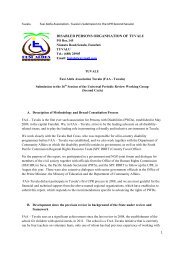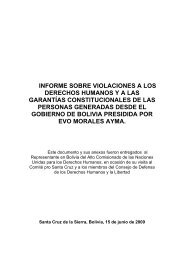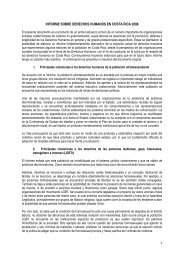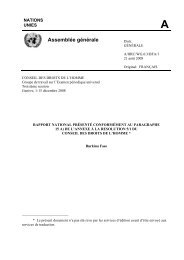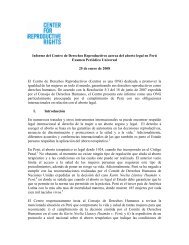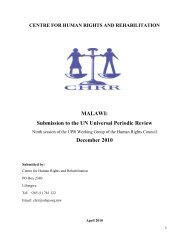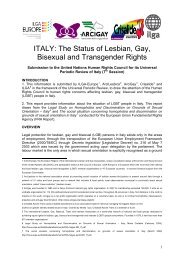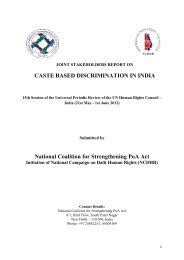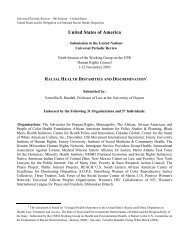Prison Needle Exchange: Lessons from a Comprehensive Review ...
Prison Needle Exchange: Lessons from a Comprehensive Review ...
Prison Needle Exchange: Lessons from a Comprehensive Review ...
Create successful ePaper yourself
Turn your PDF publications into a flip-book with our unique Google optimized e-Paper software.
• <strong>Prison</strong> has opportunity to maintain high degree of control over access to syringes<br />
• One-for-one exchange or multiple syringe distribution possible (as necessary, and as<br />
reflects individual prison policy)<br />
• Provides a higher degree of anonymity and confidentiality, as there is no interaction<br />
with prison staff<br />
• Access limited. Syringes available during set hours or set times of the week (this is<br />
particularly true if the program follows a strict one-for-one exchange policy)<br />
• Anonymity and confidentiality may be compromised by policies that require the external<br />
agency to provide information on participation to the prison<br />
• There can be mistrust by prison staff of the external services providing syringes<br />
• External workers may experience more barriers in dealing with the prison bureaucracy<br />
than internal prison health staff<br />
• Turnover in staff of non-governmental organization may result in a lack of program<br />
continuity and lack of a consistent “face” for the program for prisoners and prison staff<br />
Automated dispensing machines<br />
• High degree of accessibility (often multiple machines are in various places in the institution,<br />
which can be accessed outside the established hours of the medical service)<br />
• High degree of anonymity, as there is no involvement with staff<br />
• High acceptance by prisoners<br />
• Strict one-for-one exchange<br />
• Machines are vulnerable to vandalism and damage by prisoners and staff who are not<br />
in favour of this program<br />
• Technical problems with functioning of the dispensing machines can mean syringes<br />
are unavailable for periods of time, which can decrease prisoner confidence in the program<br />
• Some prisons are not architecturally suited for the use of dispensing machines (ie, lack<br />
of discreet areas freely accessible to prisoners in which machines may be placed)<br />
• Because the machines must be custom designed and individually constructed, the<br />
expense of providing them in sufficient numbers in multiple<br />
prisons can be prohibitive for some prison systems.<br />
It is crucial to have<br />
supportive leaders at the<br />
highest level to successfully<br />
create and implement prison<br />
needle exchange programs.<br />
Common factors in effective prison<br />
needle exchange programs<br />
The evidence <strong>from</strong> the prison needle exchange programs studied for<br />
this report shows that the actual method of needle distribution is less<br />
important than ensuring that the program responds to the needs of<br />
the institution, the prisoner population, and the prison staff. As detailed above, prison needle<br />
exchange programs have adopted various methods of syringe exchange/distribution. Each of<br />
these methods has proved successful, and has been implemented without jeopardizing the<br />
safety or security of the institution. Despite the differences in the various needle exchange<br />
programs examined for this report, the combined evidence of the programs indicates a number<br />
of common factors characterizing effective prison needle exchange programs. These<br />
common factors are reviewed in this section.<br />
Analysis of the Evidence 53



